Hymen This album is a fine addition to the Hymen catalog. As the labeldoesn't issue new albums all the time, it is obvious that they areselective with regards to what they release. Having a high level ofstandards has paid off with Scatterheart,Benny Boysen's second release as Hecq. His sense of dynamics is a keyelement to his music's success. During "Doraccle" the shifts betweenloud and quiet are extreme, and help to sustain a level of tensionwithin the music. At 61 minutes the album is long, but the variety ofsounds and textures keeps the set interesting. The way Egyptianpercussion and pizzicato strings are used on "Flood Me" make it ahighlight of the album. His use of these unusual textures shows thathis influences are more varied than those of many electronic producers.Although Boysen is technically proficient at programming intricatebeats, he doesn't let the process become the focus of the music.Instead the set retains an emotional feel, although it often soundscold and mechanical. There is always an underlying drone or atmospherictexture that keeps the tracks grounded in human emotion. The openingtrack "FDK" begins with over a minute of droning, whirling tones beforethe beat kicks in. From this point on, the percussive patterns arejuxtaposed with the atmospheric elements. By focusing on one element orthe other, there is the possibility to listen with a different focuseach time. The inclusion of several short interludes consisting ofsampled dialogue also helps the set to retain a human quality. Thisseems to be a direct reference to the "skits" often featured betweenthe songs on hip hop albums. While many electronic acts talk of theinfluence hip hop has had on their work, Boysen has addressed thissubtly within the configuration of the album itself. The fact that thedialogue is from films also emphasizes Scatterheart's cinematicquality. Although there is a great amount of variance of sounds betweenthese tracks, they work well together as a whole and flow well into oneanother. Although there are many short tracks among the 23 featured,each seems to last long enough to effectively present an idea, withoutsounding unfinished. The running order is well organized, with "TBE,"the loudest, most chaotic track, placed at the halfway point. Thisshort track's noisy barrage of percussion balances the set perfectly.It's refreshing to find that although there are so many peopleproducing instrumental electronic music today, there is still thepossibility to create an album as fresh sounding as Scatterheart.
This album is a fine addition to the Hymen catalog. As the labeldoesn't issue new albums all the time, it is obvious that they areselective with regards to what they release. Having a high level ofstandards has paid off with Scatterheart,Benny Boysen's second release as Hecq. His sense of dynamics is a keyelement to his music's success. During "Doraccle" the shifts betweenloud and quiet are extreme, and help to sustain a level of tensionwithin the music. At 61 minutes the album is long, but the variety ofsounds and textures keeps the set interesting. The way Egyptianpercussion and pizzicato strings are used on "Flood Me" make it ahighlight of the album. His use of these unusual textures shows thathis influences are more varied than those of many electronic producers.Although Boysen is technically proficient at programming intricatebeats, he doesn't let the process become the focus of the music.Instead the set retains an emotional feel, although it often soundscold and mechanical. There is always an underlying drone or atmospherictexture that keeps the tracks grounded in human emotion. The openingtrack "FDK" begins with over a minute of droning, whirling tones beforethe beat kicks in. From this point on, the percussive patterns arejuxtaposed with the atmospheric elements. By focusing on one element orthe other, there is the possibility to listen with a different focuseach time. The inclusion of several short interludes consisting ofsampled dialogue also helps the set to retain a human quality. Thisseems to be a direct reference to the "skits" often featured betweenthe songs on hip hop albums. While many electronic acts talk of theinfluence hip hop has had on their work, Boysen has addressed thissubtly within the configuration of the album itself. The fact that thedialogue is from films also emphasizes Scatterheart's cinematicquality. Although there is a great amount of variance of sounds betweenthese tracks, they work well together as a whole and flow well into oneanother. Although there are many short tracks among the 23 featured,each seems to last long enough to effectively present an idea, withoutsounding unfinished. The running order is well organized, with "TBE,"the loudest, most chaotic track, placed at the halfway point. Thisshort track's noisy barrage of percussion balances the set perfectly.It's refreshing to find that although there are so many peopleproducing instrumental electronic music today, there is still thepossibility to create an album as fresh sounding as Scatterheart.
samples:


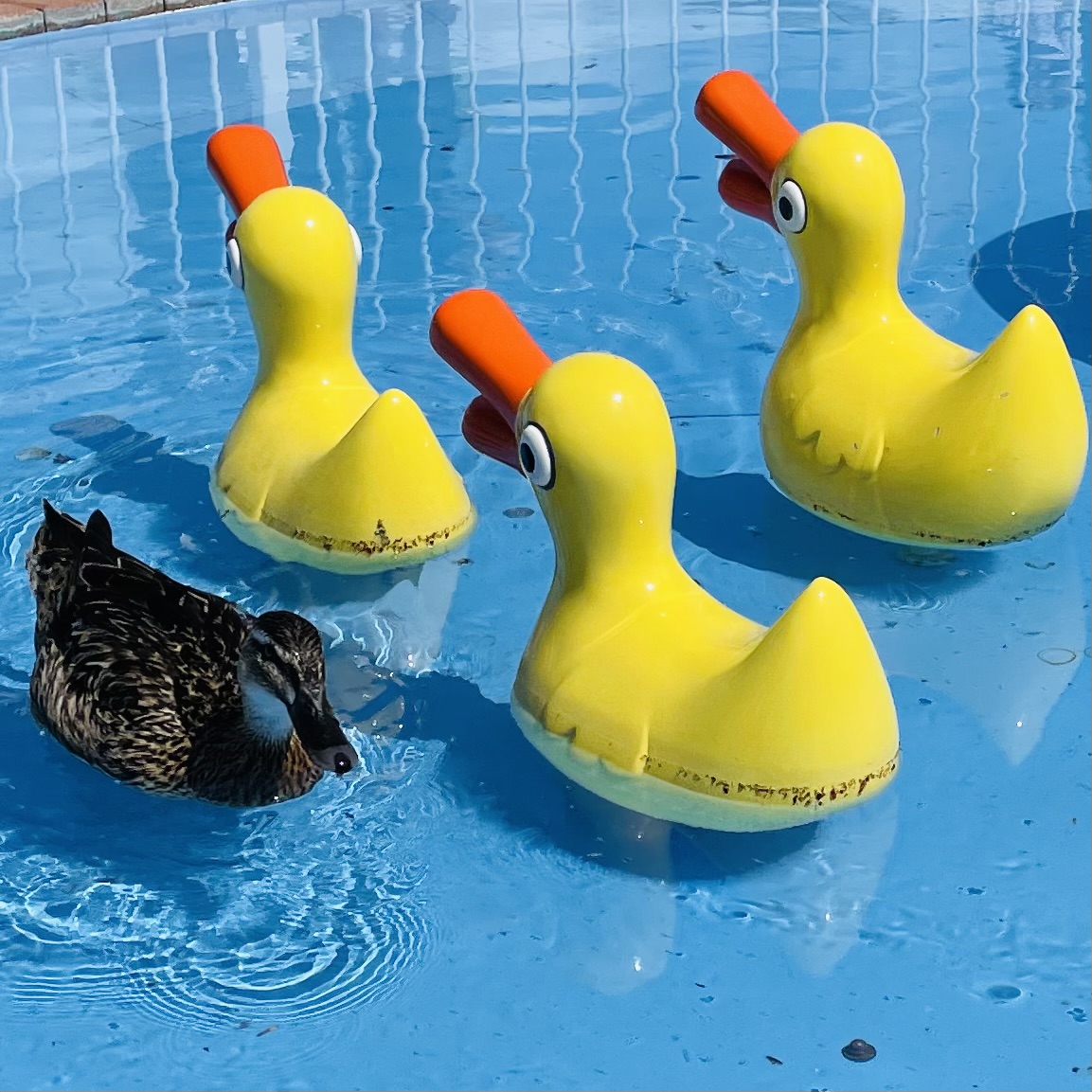
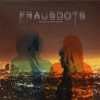 When I first looked at the cover of this CD and the title, my immediatethought was "Please kill me at this very moment and save me from themusic inside, as it's bound to be incredibly pretentious LA glam popwith a European slant, and I can't stand any more of that. Thank you,whoever hears." I'm glad to say I wasn't entirely right, but there areelements of truth to it, and therefore the record surprised me, thoughultimately I did not like it much. Brent Rademaker (Further/BeachwoodSparks) and Michelle Loiselle have a clear knack for pop songs andmelodies, but they seem rather big on glitz and appearance as the linernotes show. This can be an indication of a band without much substance,and the beginning of the record almost reflects that. "Dead Wrong"opens with a slight rephrasing of "Horse With No Name" in a faux GaryNuman delivery. Then, something shocking happens, as the verse hashorrible lyrics, but the chorus takes orbit and firmly finds its placeamong the stars ("Now everybody's doing everybody wrong, andeverybody's singing everybody else's song"). So, in a way, it's anironic parody that opens the record, and that's a bit acceptable, butthe lyrics are still lackluster, and the overall aesthetic seemsborrowed, as well. Plus, the song goes on 45 seconds longer than itshould, into a "doo doo doo" breakdown that is more doo doo. Still, theconcept delivers a benefit of doubt response, and a hope that othersongs will improve it. Sadly, no. "Fashion Death Trends" is where thealbum gets its insidious title, and seems to be about changingattitudes with clothes, and has lyrics in places like "Hello HelloHello" and "Goodbye Goodbye Goodbye." Other songs have promise, withbetter lyrics and more variation, like "The Extremists" and "SoftLight." Then "A Go-see" comes and destroys the momentum. Basically, itdoesn't get anywhere, and it does it real quick. It's derivative, butit has promise; so that's at least one positive thing.
When I first looked at the cover of this CD and the title, my immediatethought was "Please kill me at this very moment and save me from themusic inside, as it's bound to be incredibly pretentious LA glam popwith a European slant, and I can't stand any more of that. Thank you,whoever hears." I'm glad to say I wasn't entirely right, but there areelements of truth to it, and therefore the record surprised me, thoughultimately I did not like it much. Brent Rademaker (Further/BeachwoodSparks) and Michelle Loiselle have a clear knack for pop songs andmelodies, but they seem rather big on glitz and appearance as the linernotes show. This can be an indication of a band without much substance,and the beginning of the record almost reflects that. "Dead Wrong"opens with a slight rephrasing of "Horse With No Name" in a faux GaryNuman delivery. Then, something shocking happens, as the verse hashorrible lyrics, but the chorus takes orbit and firmly finds its placeamong the stars ("Now everybody's doing everybody wrong, andeverybody's singing everybody else's song"). So, in a way, it's anironic parody that opens the record, and that's a bit acceptable, butthe lyrics are still lackluster, and the overall aesthetic seemsborrowed, as well. Plus, the song goes on 45 seconds longer than itshould, into a "doo doo doo" breakdown that is more doo doo. Still, theconcept delivers a benefit of doubt response, and a hope that othersongs will improve it. Sadly, no. "Fashion Death Trends" is where thealbum gets its insidious title, and seems to be about changingattitudes with clothes, and has lyrics in places like "Hello HelloHello" and "Goodbye Goodbye Goodbye." Other songs have promise, withbetter lyrics and more variation, like "The Extremists" and "SoftLight." Then "A Go-see" comes and destroys the momentum. Basically, itdoesn't get anywhere, and it does it real quick. It's derivative, butit has promise; so that's at least one positive thing.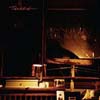 On this double CD, their third release, Jesse Poe's Tanakh have abandoned songwriting and shifted their attention to creating dark atmospheric soundscapes. Seven musicians contribute to the project, including Pat Best, who must have felt right at home here, as the shifting drones sometimes recall his work with Pelt. The music sounds very much a product of the cavernous temple in which it was recorded.
On this double CD, their third release, Jesse Poe's Tanakh have abandoned songwriting and shifted their attention to creating dark atmospheric soundscapes. Seven musicians contribute to the project, including Pat Best, who must have felt right at home here, as the shifting drones sometimes recall his work with Pelt. The music sounds very much a product of the cavernous temple in which it was recorded.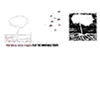 When a band concocts a formula that is not easily classifiable and isalmost indecipherable at times yet is complete compelling and causeslong periods of not wanting to turn the repeat function off on the CDplayer, they are to be congratulated. Infectious, sinewy, ever-morphingand pulsing with energy almost describe any music from the Berg SansNipple, but these songs are particularly demonstrative of theircreative abilities. The quiet chimes that start the proceedings arequickly augmented by beefy hip hop drums and falsetto vocals that areunrecognizable and cut up jitter-style as the need arises. Low keys arejoined by high squelches and a lovely chimes breakdown, and the trackdrives on with the sinister underbelly of a corrupt afterlife. Perfectsounds for Purgatory, hence the track's title, and just when it seemslike it's all over the wattage increases to 150% for the last twominutes. Then horns break the darkness open and usher in the holinessof "Hark, the Poonie Angel Sings!" Processed vocals mixed with keyscreate an eerie choir from the beyond, and tainted breathy whispersinfect like the dream passages of REM sleep. The track does notoverstay its welcome, luckily, though I found it puzzling that theangels get less say than the poor souls in Purgatory; maybe they'rejust less interesting. "Swordfighting" is a bit crunchier, with a noirbackdrop, much like the theme music for a man on a revenge streak,searching out the next person in the group who ratted him out. The sameghostly choir is present, like the souls to be redeemed egging on theevil work to be done. At four minutes it is a bit repetitious, but notoverbearingly so. The CD closes with the more experimental and quietpulsing of "Memory Hole," and in just twenty minutes the group hasraised hairs and slicked them back, applying a relaxing massage rightat the end. It's a gamut to be run, and they pass without incident.
When a band concocts a formula that is not easily classifiable and isalmost indecipherable at times yet is complete compelling and causeslong periods of not wanting to turn the repeat function off on the CDplayer, they are to be congratulated. Infectious, sinewy, ever-morphingand pulsing with energy almost describe any music from the Berg SansNipple, but these songs are particularly demonstrative of theircreative abilities. The quiet chimes that start the proceedings arequickly augmented by beefy hip hop drums and falsetto vocals that areunrecognizable and cut up jitter-style as the need arises. Low keys arejoined by high squelches and a lovely chimes breakdown, and the trackdrives on with the sinister underbelly of a corrupt afterlife. Perfectsounds for Purgatory, hence the track's title, and just when it seemslike it's all over the wattage increases to 150% for the last twominutes. Then horns break the darkness open and usher in the holinessof "Hark, the Poonie Angel Sings!" Processed vocals mixed with keyscreate an eerie choir from the beyond, and tainted breathy whispersinfect like the dream passages of REM sleep. The track does notoverstay its welcome, luckily, though I found it puzzling that theangels get less say than the poor souls in Purgatory; maybe they'rejust less interesting. "Swordfighting" is a bit crunchier, with a noirbackdrop, much like the theme music for a man on a revenge streak,searching out the next person in the group who ratted him out. The sameghostly choir is present, like the souls to be redeemed egging on theevil work to be done. At four minutes it is a bit repetitious, but notoverbearingly so. The CD closes with the more experimental and quietpulsing of "Memory Hole," and in just twenty minutes the group hasraised hairs and slicked them back, applying a relaxing massage rightat the end. It's a gamut to be run, and they pass without incident.  Nagisa Ni Te is primarily the work of Shinji Shibayama and his partnerand muse Masako Takeda. Over the course of four albums, the Japanesepsych-folk duo has carved out their own niche among their moreavant-leaning Japanese contemporaries, creating subtle and lovely popmusic that floats by like a gentle summer breeze. Their name, whichmeans "On the Beach" in Japanese, seems to be a direct reference toNeil Young's classic album of the same name, and they do seem to takesome musical inspiration from Young as well. Though their music at timeseems minimal and unadorned, there is a deceptive simplicity at work intheir arrangements. A wide range of instruments is used, as well asgenius multi-tracked vocal harmonies, but always in a refreshinglyuncomplicated way that never seems too calculated. Their chief subjectis nature, and love of the same, as evidenced by the included lyrics,given an English translation by The Wire's resident Japanophile Alan Cummings. The Same As a Flowerevokes the pastoral simplicity of nature in understated surrealistterms, where the sky is "tall as a flower," "brambles taste sweet" andthe sky is "shattered by fish." The album seems to be the duo's mostgelled statement thus far, full of beautiful melodies that etchedthemselves into my brain quite naturally after only a few listens. Theopening title track has a catchy chorus and a catchier melody, a simplesweet duet about the contemplation of a flower. Though Nagisa Ni Te'sprogressive tendencies and eclectic influences seem often to suggestIncredible String Band or other 60s acts, their consistentlyuncluttered arrangements put them closer in style to Belle andSebastian, without the twee affectation. Using only an electric guitarand evocative vocal overdubbing, "River" is able to hauntingly evokethe gentle currents and eddies of the song's namesake. "Wife" is aninstrumental intermission that recalls George Harrison's solo work, orthe Beach Boys' "Fall Breaks and Back to Winter." "Bramble" floats byat a leisurely pace for 11 minutes, ending with a hypnotic guitar andmellotron duet. It's organically psychedelic without resorting to thetired repertoire of studio gimmickry that characterizes most modernpsych. Truly, the album is lighter than air, and constantly threatensto float away like so many dandelion spores. But while it's stilltangible, it's as lovely and uncluttered as any psych album you'relikely to hear all year.
Nagisa Ni Te is primarily the work of Shinji Shibayama and his partnerand muse Masako Takeda. Over the course of four albums, the Japanesepsych-folk duo has carved out their own niche among their moreavant-leaning Japanese contemporaries, creating subtle and lovely popmusic that floats by like a gentle summer breeze. Their name, whichmeans "On the Beach" in Japanese, seems to be a direct reference toNeil Young's classic album of the same name, and they do seem to takesome musical inspiration from Young as well. Though their music at timeseems minimal and unadorned, there is a deceptive simplicity at work intheir arrangements. A wide range of instruments is used, as well asgenius multi-tracked vocal harmonies, but always in a refreshinglyuncomplicated way that never seems too calculated. Their chief subjectis nature, and love of the same, as evidenced by the included lyrics,given an English translation by The Wire's resident Japanophile Alan Cummings. The Same As a Flowerevokes the pastoral simplicity of nature in understated surrealistterms, where the sky is "tall as a flower," "brambles taste sweet" andthe sky is "shattered by fish." The album seems to be the duo's mostgelled statement thus far, full of beautiful melodies that etchedthemselves into my brain quite naturally after only a few listens. Theopening title track has a catchy chorus and a catchier melody, a simplesweet duet about the contemplation of a flower. Though Nagisa Ni Te'sprogressive tendencies and eclectic influences seem often to suggestIncredible String Band or other 60s acts, their consistentlyuncluttered arrangements put them closer in style to Belle andSebastian, without the twee affectation. Using only an electric guitarand evocative vocal overdubbing, "River" is able to hauntingly evokethe gentle currents and eddies of the song's namesake. "Wife" is aninstrumental intermission that recalls George Harrison's solo work, orthe Beach Boys' "Fall Breaks and Back to Winter." "Bramble" floats byat a leisurely pace for 11 minutes, ending with a hypnotic guitar andmellotron duet. It's organically psychedelic without resorting to thetired repertoire of studio gimmickry that characterizes most modernpsych. Truly, the album is lighter than air, and constantly threatensto float away like so many dandelion spores. But while it's stilltangible, it's as lovely and uncluttered as any psych album you'relikely to hear all year. 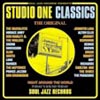 On the 4th of May this year Clement "Sir Coxsone" Dodd died. He is oneof the most important figures in the history of reggae music; he openedand ran the now famous Studio One recording facility in Kingston, waspresent and perhaps partially responsible for many of the stylisticdevelopments within reggae, and put out some of the first records fromsuch individuals as the Heptones, Burning Spear, and the Wailers."Studio One Classics" collects 18 tracks from 1964 to 1981 and itclearly demonstrates the brilliance, depth, and soul of reggae and allits variations. Carlton and the Shoes of 1968 are placed next to theHeptones of 1978 and the Wailers from 1965 are heard next to tracksfrom Sugar Minott and Lone Ranger from 1980 and 1981; while the styleschange and shift from track to track and attitudes slip from relaxed topoppin' and feverish, what this compilation makes so evident is thatthere is more heart and love in these tracks than any dancehall orR&B performer today could ever hope to touch on. Hearing DennisBrown perform "No Man Is an Island" or Sound Dimension bleed "RockfortRock" is like a slap to the face because its thatmuch better than anything that's been thrown onto the radio ortelevision screen. And while I can appreciate Bob Marley, listening theWailers bop through "Simmer Down" makes me wonder why this part of hiscareer hasn't received more attention than anything else. Every lasttrack feels fresh, too, with songs like "Rougher Yet" and "Pretty LooksIsn't All" exhibiting all the sounds and feelings that a large numberof future dub, reggae, soul, and jazz lovers would emulate and developout of. This is an excellent set of songs from one of the mostimportant, if not the most important, studios in all of reggae.The beginning of every change in reggae history can be heard here andat the top of its form - it simply doesn't get much better than this.If only Prince Far I and Toots and the Maytals had been includede onthis compilation, then it could have been perfect.
On the 4th of May this year Clement "Sir Coxsone" Dodd died. He is oneof the most important figures in the history of reggae music; he openedand ran the now famous Studio One recording facility in Kingston, waspresent and perhaps partially responsible for many of the stylisticdevelopments within reggae, and put out some of the first records fromsuch individuals as the Heptones, Burning Spear, and the Wailers."Studio One Classics" collects 18 tracks from 1964 to 1981 and itclearly demonstrates the brilliance, depth, and soul of reggae and allits variations. Carlton and the Shoes of 1968 are placed next to theHeptones of 1978 and the Wailers from 1965 are heard next to tracksfrom Sugar Minott and Lone Ranger from 1980 and 1981; while the styleschange and shift from track to track and attitudes slip from relaxed topoppin' and feverish, what this compilation makes so evident is thatthere is more heart and love in these tracks than any dancehall orR&B performer today could ever hope to touch on. Hearing DennisBrown perform "No Man Is an Island" or Sound Dimension bleed "RockfortRock" is like a slap to the face because its thatmuch better than anything that's been thrown onto the radio ortelevision screen. And while I can appreciate Bob Marley, listening theWailers bop through "Simmer Down" makes me wonder why this part of hiscareer hasn't received more attention than anything else. Every lasttrack feels fresh, too, with songs like "Rougher Yet" and "Pretty LooksIsn't All" exhibiting all the sounds and feelings that a large numberof future dub, reggae, soul, and jazz lovers would emulate and developout of. This is an excellent set of songs from one of the mostimportant, if not the most important, studios in all of reggae.The beginning of every change in reggae history can be heard here andat the top of its form - it simply doesn't get much better than this.If only Prince Far I and Toots and the Maytals had been includede onthis compilation, then it could have been perfect.  Someone in this band has been to hell and back; the vocalist emulates enough emotions to make a manic depressive feel good about the way life is going. Depravity, arson, prostitution, obsession, betrayal, manipulation, and alcoholism are just a few of the topics the lyricist conjures up in the first half of the album. The music is a fitting combination of manipulated beats, chamber music, sickly lounge deliveries, and darkly lit soundscapes fluctuating between old phonograph recordings from the 1920's and blazingly confrontational arrangements that could've only been born out of the heart of a psychopath.
Someone in this band has been to hell and back; the vocalist emulates enough emotions to make a manic depressive feel good about the way life is going. Depravity, arson, prostitution, obsession, betrayal, manipulation, and alcoholism are just a few of the topics the lyricist conjures up in the first half of the album. The music is a fitting combination of manipulated beats, chamber music, sickly lounge deliveries, and darkly lit soundscapes fluctuating between old phonograph recordings from the 1920's and blazingly confrontational arrangements that could've only been born out of the heart of a psychopath. Last I heard from this Japanese label was their release of Fennesz's Live in Japan,something of a surprise addition to that artist's catalogue, and onethat offered both a glimpse at new developments in his too-familiarstyle, and a pleasantly indulgent rebuff against those critics ready topredict, or pounce on, a new masterpiece. On its latest release, Headzgives another digital guitar hero, Rafael Toral, a similar opportunityto avoid quick canonization and indulge some new ideas over the courseof one disc-length track. On past records, Toral produced everythingfrom ecstatic, shoegazing jams to multi-sectioned, epic-length texturalexplorations, often using the juxtaposition between his moreintentionally rockist moments and the purer ambient passages to createan unique soundworld that embraces both with equal fervor. Harmonic Series 2 is a significant departure from the digestible, pop-length drones that filled Toral's last record, The Violence of Discovery, The Calm of Acceptance,though the switch to less-concise, more demanding composition iswelcome. The 43-min. piece, for sinewave, guitar and analogelectronics, marks the artist's first use of the computer as autonomousmusical instrument, its waveforms acting as the synthetic equivalent ofa guitarist's blending harmonic tones. Toral's use of the sinewave liesfar from the alienating compositions usually associated with such pureand relentless sounds, and while Harmonic Series does avoid thecosmic elegance that has characterized the artist's work thus far, thepiece remains surprisingly inviting. Weightless strands of e-bowedfeedback and gently throbbing harmonic layers intertwine with thecomputer's tones to create the most substantial portions of thecomposition, a fluid surface of constant dissolve and regeneration.Through a meticulous cycle of blends and pans, Toral reaches a powerfulsonic density from the tight flux of three or four blank tones ratherthan a congestion or distortion of the stereo field. The gritty,psychedelic edge that touched Toral's early work is totally absent;instead Harmonic Series seems to develop out of the resultingnegative space, a lyric-less tone poem to the information age, full ofhaunting, passive currents. Parts of the piece even recall the warpingeffects in Coil's Time Machines. The artwork tells it best:gone are the floating passenger jets that graced the covers of so manyToral recordings; here he offers only dark futurism, an empty skystalked by silent electrical towers. Given the track's length and theresistance of the pure tones to any recognizable or repeated dynamic,an overarching mood or directive within Harmonic Series is hardto locate. The steady flow and warm tonalities of the piece keep itinviting, but never to the rapturous extremes of the artist's otherlong-form composition, Wave Field. It seems fitting, if a bitpredictable or even overstated on such a sprawling release, that theartist's embrace of new technology should lead his music towards morewayward, alien territories.
Last I heard from this Japanese label was their release of Fennesz's Live in Japan,something of a surprise addition to that artist's catalogue, and onethat offered both a glimpse at new developments in his too-familiarstyle, and a pleasantly indulgent rebuff against those critics ready topredict, or pounce on, a new masterpiece. On its latest release, Headzgives another digital guitar hero, Rafael Toral, a similar opportunityto avoid quick canonization and indulge some new ideas over the courseof one disc-length track. On past records, Toral produced everythingfrom ecstatic, shoegazing jams to multi-sectioned, epic-length texturalexplorations, often using the juxtaposition between his moreintentionally rockist moments and the purer ambient passages to createan unique soundworld that embraces both with equal fervor. Harmonic Series 2 is a significant departure from the digestible, pop-length drones that filled Toral's last record, The Violence of Discovery, The Calm of Acceptance,though the switch to less-concise, more demanding composition iswelcome. The 43-min. piece, for sinewave, guitar and analogelectronics, marks the artist's first use of the computer as autonomousmusical instrument, its waveforms acting as the synthetic equivalent ofa guitarist's blending harmonic tones. Toral's use of the sinewave liesfar from the alienating compositions usually associated with such pureand relentless sounds, and while Harmonic Series does avoid thecosmic elegance that has characterized the artist's work thus far, thepiece remains surprisingly inviting. Weightless strands of e-bowedfeedback and gently throbbing harmonic layers intertwine with thecomputer's tones to create the most substantial portions of thecomposition, a fluid surface of constant dissolve and regeneration.Through a meticulous cycle of blends and pans, Toral reaches a powerfulsonic density from the tight flux of three or four blank tones ratherthan a congestion or distortion of the stereo field. The gritty,psychedelic edge that touched Toral's early work is totally absent;instead Harmonic Series seems to develop out of the resultingnegative space, a lyric-less tone poem to the information age, full ofhaunting, passive currents. Parts of the piece even recall the warpingeffects in Coil's Time Machines. The artwork tells it best:gone are the floating passenger jets that graced the covers of so manyToral recordings; here he offers only dark futurism, an empty skystalked by silent electrical towers. Given the track's length and theresistance of the pure tones to any recognizable or repeated dynamic,an overarching mood or directive within Harmonic Series is hardto locate. The steady flow and warm tonalities of the piece keep itinviting, but never to the rapturous extremes of the artist's otherlong-form composition, Wave Field. It seems fitting, if a bitpredictable or even overstated on such a sprawling release, that theartist's embrace of new technology should lead his music towards morewayward, alien territories.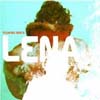 Sometime during the latter half of this year, and much to thedispleasure of my incredibly attractive girlfriend, I developed arenewed interest in dub music. Picking through CD store bins, as Iregularly do, I snagged copies of Horace Andy, Keith Hudson, and LeePerry productions, eagerly immersing myself in the fantastic reverbsand echo chambers. The latest Dubblestandart album, which I reviewed afew issues back, as well as my rediscovering the original brillianttrilogy of Pole albums, sparked my appetite for new works in the genre.Thankfully, Floating Roots,Mathias Deplanque's second album as Lena for Quatermass, more thansatiates my hunger with some of the best "digi-dub" outside of the~scape label family. "Wax Model" opens the album with a slow, exactingbeat amidst a moist palette of Vladislav Delay style synth beds. TheJamaican-influenced sound that is somewhat absent on the first trackquickly emerges on "Under False Rulers," a bass-heavy number thatfeatures one of several appearances by MC Tablloyd. Known by some forhis work with 69db of Spiral Tribe, Tablloyd's style and tone varieswildly at times, yet only occasionally interferes with Lena's busy,bubbly soundscapes. The highly danceable cut "Wah Gwan" features hismost satisfying contribution, a vibrant and perhaps nonlinear riffingtreated with delay effects. The only other vocalist on the album,one-time Black Dog collaborator Black Sifichi, contributes somedeep-throat spoken word poetry to the head-nodding "Storm Blown". Theinstrumental tracks that close out the album, including two versions of"Mountain Dub", further shows off Lena's skills as a producer, but nonemore reverent of true dub music as the title track. "Floating Roots"grooves along with a dark tone and a keen, respectful understanding ofthe inspired and inspirational artists who came before him. Whilebridging the dub tradition with the clinical aesthetics of minimaltechno is nothing new in 2004, Lena pulls together all the rightelements for a balanced modern album that begs for repeat listening andappropriate herbal accompaniment.
Sometime during the latter half of this year, and much to thedispleasure of my incredibly attractive girlfriend, I developed arenewed interest in dub music. Picking through CD store bins, as Iregularly do, I snagged copies of Horace Andy, Keith Hudson, and LeePerry productions, eagerly immersing myself in the fantastic reverbsand echo chambers. The latest Dubblestandart album, which I reviewed afew issues back, as well as my rediscovering the original brillianttrilogy of Pole albums, sparked my appetite for new works in the genre.Thankfully, Floating Roots,Mathias Deplanque's second album as Lena for Quatermass, more thansatiates my hunger with some of the best "digi-dub" outside of the~scape label family. "Wax Model" opens the album with a slow, exactingbeat amidst a moist palette of Vladislav Delay style synth beds. TheJamaican-influenced sound that is somewhat absent on the first trackquickly emerges on "Under False Rulers," a bass-heavy number thatfeatures one of several appearances by MC Tablloyd. Known by some forhis work with 69db of Spiral Tribe, Tablloyd's style and tone varieswildly at times, yet only occasionally interferes with Lena's busy,bubbly soundscapes. The highly danceable cut "Wah Gwan" features hismost satisfying contribution, a vibrant and perhaps nonlinear riffingtreated with delay effects. The only other vocalist on the album,one-time Black Dog collaborator Black Sifichi, contributes somedeep-throat spoken word poetry to the head-nodding "Storm Blown". Theinstrumental tracks that close out the album, including two versions of"Mountain Dub", further shows off Lena's skills as a producer, but nonemore reverent of true dub music as the title track. "Floating Roots"grooves along with a dark tone and a keen, respectful understanding ofthe inspired and inspirational artists who came before him. Whilebridging the dub tradition with the clinical aesthetics of minimaltechno is nothing new in 2004, Lena pulls together all the rightelements for a balanced modern album that begs for repeat listening andappropriate herbal accompaniment.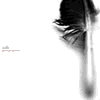 It's horrible to expect someone to fail miserably, but logical toexpect that as humans everyone has the ability to stumble a bit or fallcompletely. Realistically Nathan Amundson should have put out a recordwith at least one bad song by now. He hasn't, and the trend continueson his new five-song EP, as well as his trend of releasing material onas many labels as possible. Whether he has a huge backlog of materialto support this or he just takes up any offer to release an EP isanyone's guess, but it matters little as the songs are alwaystop-notch. Collaborations with Jessica Bailiff also seem to be aregular occurrence — and never a bad thing — as she provides backupvocals and drums on a few tracks. The only discernible difference fromother work is a slight improvement in production, as Amundson's voiceis clearer and fuller, making the harmonies with Bailiff even moredelectable. Lyrics have always been a highlight, and this releaseincludes some of the best: "You've got your own ego to feed... whycan't you ever say what you mean?" Where Debridementcomes off very introspective, these songs are more outward expression,and even storytelling to a certain extent. Threading it all together isAmundson's often delicate guitar work and passive demeanor. There'snever a true emotional distance, but rarely does he sound very moved bythe words: just plaintively presentational. The highlights are thefinal two tracks, however, as the drums on the first and the electricguitar on the second represent a more aggressive stance than I've heardfrom Rivulets in the past, and a welcome one at that. The hauntingfinal minute of "Slight Return" is alone worth the price of admission,but the whole EP proves once again what a stunning talent is present inthe here and now. More to the point, his songs are still torturous attimes, but he seems less tortured and more confident, and that could bea dangerous proposition on a third full-length.
It's horrible to expect someone to fail miserably, but logical toexpect that as humans everyone has the ability to stumble a bit or fallcompletely. Realistically Nathan Amundson should have put out a recordwith at least one bad song by now. He hasn't, and the trend continueson his new five-song EP, as well as his trend of releasing material onas many labels as possible. Whether he has a huge backlog of materialto support this or he just takes up any offer to release an EP isanyone's guess, but it matters little as the songs are alwaystop-notch. Collaborations with Jessica Bailiff also seem to be aregular occurrence — and never a bad thing — as she provides backupvocals and drums on a few tracks. The only discernible difference fromother work is a slight improvement in production, as Amundson's voiceis clearer and fuller, making the harmonies with Bailiff even moredelectable. Lyrics have always been a highlight, and this releaseincludes some of the best: "You've got your own ego to feed... whycan't you ever say what you mean?" Where Debridementcomes off very introspective, these songs are more outward expression,and even storytelling to a certain extent. Threading it all together isAmundson's often delicate guitar work and passive demeanor. There'snever a true emotional distance, but rarely does he sound very moved bythe words: just plaintively presentational. The highlights are thefinal two tracks, however, as the drums on the first and the electricguitar on the second represent a more aggressive stance than I've heardfrom Rivulets in the past, and a welcome one at that. The hauntingfinal minute of "Slight Return" is alone worth the price of admission,but the whole EP proves once again what a stunning talent is present inthe here and now. More to the point, his songs are still torturous attimes, but he seems less tortured and more confident, and that could bea dangerous proposition on a third full-length.
